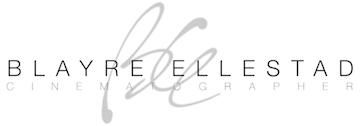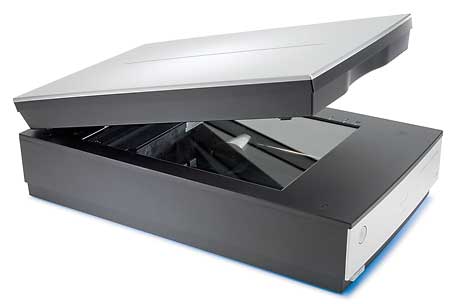I come to this post with a feeling of celebration and relief. Celebrating a great portrayal of an amazing family x-mas adventure, and relief from scanning lomokino frames. I’ve certainly already put in a few years worth of scanning time over the past week, processing 8000+ frames individually. There really was no better workflow, and I’ve researched every possible avenue on this one. There are some programs designed to ease the Lomokino process, but they are so new and very faulty. To grab the full quality and effect of this camera, it was necessary to properly scan each frame. Hopefully someone develops an easier method in the future!
Every year our family meets at Christmas for a vacation. We’re all spread over the country so it’s the best way to keep the gang close, if you will. And of course, that’s what Christmas is all about. This year we found an incredible cruise leaving from Rio de Janeiro, travelling down the coast of South America to Buenos Aires. It was such a change of scenery and shockingly a destination we all never expected to visit in our lives. It’s just so far down there…
This would be the first time I’ve spent a Canadian winter in a summer location, as it is in Australia, South America and quite possibly somewhere else in this small world of ours. We obviously expected sunshiny beach weather, but we weren’t aware Brazil was the hottest place on earth at the time! Quickly we were all congratulating each other on spectacular instant tans, spending slightly more time in the mirrors speaking to ourselves about our new sexy faces. Soon after we were covering our bodies with towels and screaming as the sun literally ripped through our skin, properly toasting each and every one of us. At one point, I felt I could peel my whole face off, similar to a mask in Mission Impossible (the new film is amazing btw…).
Cruising is such great way to spend a relaxing vacation, cause you can really slack off and do diddly squat. The service is ridiculous from your rooms to the restaurants. Sometimes I would think to myself, “I could really use a diet coke”, and POOF, it had already arrived. The staff even lifted my body into the shower and went through the shampoo and conditioning process for me.
We saw amazing scenery and ventured into incredible atmospheres ranging from remote waterfalls to heavily over-populated metro areas. I was once again the crazy guy with a camera taking shots of absolutely everything, but this time I was holding a little black box with a crank on the side… it was so much fun! Ever since the first roll of film expired, I’ve been dying to get the edit done. I’m all smiles now as my newly digitized collection of 63 film rolls has come to rest in it’s new video form. I think you’ll love the way it looks, and hopefully understand why I went through so much to get it done. Aside from the fact it’s my ultimate passion to make films, there’s just no way you can’t be intrigued, at the very least, when watching the final product. In a world where everyone is blasting around with super ultra high-end resolution monster cameras, it’s sometimes nice to take it back a few years and engage in your creative realm with an original, organic medium.
You’ll see about half-way through the film, we were taken to a little island called Isla de Lobos (sea-lion island). Isla de Lobos is a nature reserve because it has the largest colony of sea lions in the western hemisphere. Many tourists venture out as far as we did, but apparently we were one of the only groups EVER to ask if we could swim with the sea lions! Since we didn’t take the tour with an official touring company, our captain gave a small shrug of the head when asked if we could swim around Isla de Lobos… the protected nature reserve. We took the small shrug as an “absolutely!”.
Never in my life have I experienced something close in comparison. I was blown away by the thousands of beautiful sea lions surrounding us (literally) and the shear terror of what may be going on beneath us. “Think of how good the shots will be!” I said as I threw my body into unfamiliar wild sea creature territory… not words I’d like as my last. I need to extend a huge thank you to Johnny McCann for being the brave one who jumped in first, as there’s not a chance in hell I would’ve otherwise. He was sort of an experiment. For about 5 minutes we all stood on the boat watching him swim into the pack (heard, flock, group?) of blubbery cute water monsters, expecting for something to pull him under. His short-term survival was enough to convince my brother Chase, sister Kiesa and I to follow suit. Thanks Johnny!
It may be awkward to watch a strange family run around the beaches of Uruguay, but please enjoy the film I’ve put together below:
Here is the black & white version of the film:
Workflow: I shot mainly with ASA 400 & 800 Lomography film, but found myself purchasing the standard Kodak gold 400 as I quickly ran out. The Lomokino has an average shutter speed of 1/100th, and an f-stop range of 5.6 to 11. At a full controlled crank you can average about 4-6 fps, though I tend to lean towards a slower crank to try and make each frame noticeably different.
At the end of the trip, I gather all 63 rolls and had the negatives developed at the local one hour photo - it took two days. The next step was to bring home the rolls, and make measured cuts so that I could fit separate slides into the holders on the V700 Epson scanner. I tried using Silverfast (said to be the ultimate scanning software) but for this operation it was garbage, so I relied on the standard Epson Scan software which worked a treat. It takes approx 45 minutes to properly scan a roll of Lomokino film. My girlfriend Laura suffered through many long days of “REEEE RO REEEEEE” sounds which I know must of driven her mad, but thankfully she was a good sport. I do want to reenforce the fact that if you take on a big project with the Lomokino, you will be scanning your ass of for a long time. Make sure you understand this before going in headfirst as I did. It’s one thing to process a 30 second clip, as you’ve probably come accustomed to seeing online, but I ended up with 25 minutes of footage!!!
The editing was done in FCS 3, which will officially be my last edit using the software. I’m in a strict undertaking of all the Adobe programs, and love the new direction they’re heading in.
Best wishes in 2012!
B.


 Elle & Be . Boutique Wedding Cinematography
Elle & Be . Boutique Wedding Cinematography
Recent Comments